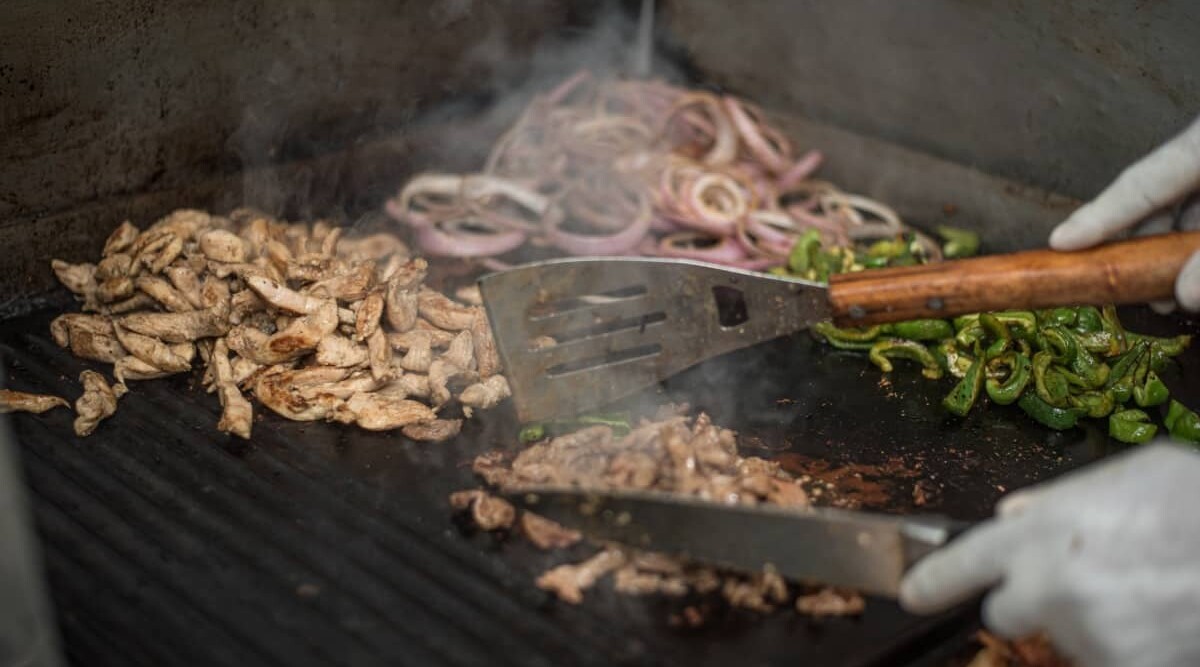
Are grill mats safe? Yes, if you choose the right type made from suitable materials, and use them according to the guidelines for how they’re supposed to be used, grill mats are safe for cooking.
The main danger of using grill mats is overheating them beyond their recommended safe temperature limit, typically around 500 °F. Above this temperature can cause some grill mat materials, such as PTFE, to break down and release potentially toxic fumes.
The safety of grill mats is controversial, with some people saying they’re unsafe and some saying they’re perfectly fine.
The trouble is, some things aren’t well-suited to tossing on the grate. Think fish, small veggies, and just about anything you’d want for breakfast that would fall straight through the bars. So what’s the solution? You could try a skillet, but that limits your available space. Foil is an option, but it’s wasteful and hard to keep flat. The best available option is a grill mat.
Grill mats are flat, reusable, and easy to clean. Best of all, you can cover your entire cooking surface with them, adding a whole new dimension to your outdoor cooking. It’s perfect!
Or is it? What’s the truth about grill mats? Are they safe to use? Let’s dig into the claims for and against grill mats, the various types available, and how to use them properly.
Key Takeaways
- Grill mats are a convenient way to cook foods not well suited to grill grates, such as fish, small liquids, and vegetables.
- There are different types of grill mat materials, including fiberglass, silicone, copper, PTFE, and PFOA. Each material has its own pros and cons.
- Some grill mats may emit fumes at high temperatures that could potentially be toxic, but this is not unique to grill mats, and there is debate over the actual danger.
- Following the manufacturer’s instructions for safe use, including monitoring cooking temperatures, proper cleaning, and storage, is important.
- Grill mats have temperature limits, typically around 500 °F, and should not be used for roasting or smoking meat.
- Using non-metal BBQ utensils and controlling flare-ups can help prolong the life of grill mats.
- Overall, grill mats are considered safe if used correctly and offer a convenient option for grilling certain items.
Jump to:
What is the Supposed Danger of Grill Mats?
The supposed danger of grill mats is if you exceed stated temperature limits, they can release toxic fumes. And wear or damage risks ingestion of particles of non-food-safe materials.
A variety of synthetic materials are used to make grill mats. It’s these chemicals and compounds that make them flexible, heat-resistant, and non-stick. However, some of these compounds begin to break down at very high temperatures, emitting fumes that can potentially get into your food or your respiratory system. Some of these fumes are believed (rightly or not) to be toxic and dangerous to people.
However, grill mats are very popular because they allow you to cook liquid items such as eggs, or pancakes, and offer a non-stick that help prevent foods sticking to your grill grates. Also, they are cheap, and offer a huge saving over buying a dedicated outdoor griddle.
Different Types of Grill Mat Materials — and are They Safe?
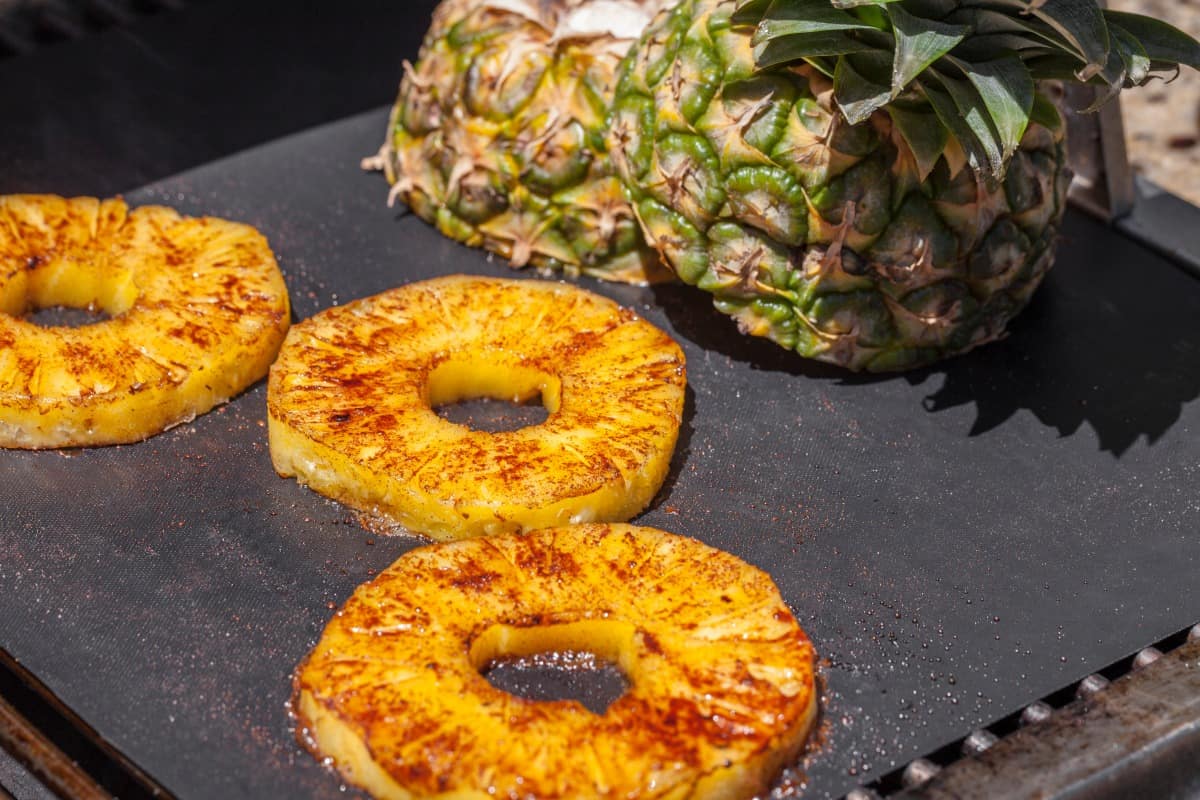
Not all grill mats are the same. There is a variety of materials to choose from, each with their own unique properties. Here’s a summary of each kind and any pros and cons they may have.
Fiberglass
Fiberglass is one of the most common materials used for grill mats, and is perfectly safe to use for grill mats. It’s also flexible, reasonably durable, and very light. Plus, it’s easy to store and clean.
As the name states, fiberglass is made from glass that’s heated until it’s nearly liquid and then pushed through fine holes to form strands of glass. You can take those strands and weave them into other materials, often a resin, to strengthen them and add heat resistance.
The fiberglass and resin compound is rolled out thin, cut to shape, and a non-stick coating is applied to make a grill mat.
Fiberglass in this form is perfectly safe. Once you start to see your mat breaking down, it’s time to dispose of it, but that’s more because it won’t do its job well than out of any safety concerns.
Silicone
Silicone is a safe material to use for grill mats. It’s a lot like rubber; it’s stretchy, and it’s moisture resistant. Unlike rubber, there’s no natural version — silicone is 100% synthetic, though it incorporates silicon, a naturally occurring element.
There’s a food-grade version of silicone, and you’re probably familiar with it. Most likely, you own oven mitts made from it or kitchen or BBQ utensils coated with it to keep from scratching your cookware or grill.
Silicone holds up really well to extreme temperatures, so it’s fantastic for cooking. Plus, it’s non-toxic, containing no lead, latex, or BPA.
Copper
Well, this is a bit misleading: “copper” grill mats aren’t actually rolled sheets of copper, despite looking like a shiny foil. There are actually some brands that contain no copper whatsoever.
Typically, copper mats are made of flexible material with copper strands woven through (“copper infused,” as one ad puts it) and topped with a non-stick coating.
Copper grill mats tend to be thicker, on average, than other mats, so they should last longer. Copper is a great conductor of heat, too (hence copper-bottomed pots), so they’ll heat up quickly and distribute that heat evenly.
The main drawback for many copper mats is they’re too stiff to roll up for storage. That’s not so bad, though; rolled mats sometimes hold their curl, which you don’t want, and are prone to cracking and splitting, which can be unsafe.
As with all grill mats, copper mats are safe when used as directed. However, as they have a non-stick coating, if heating past their recommended safe temperature for use can result in offgassing of fumes that may be harmful.
PTFE
Here’s an acronym you’ll see a lot when you’re shopping for grill mats. It stands for polytetrafluoroethylene. Sounds a bit scary, doesn’t it?
What is PTFE? It’s the non-stick coating we keep talking about that almost all grill mats use. The most common brand of PTFE is Teflon. Right — the stuff you have on most of your pans already.
When manufacturers warn you about the mats breaking down at very high temperatures, this is the stuff they’re concerned with. PTFE breakdown usually happens at temperatures exceeding 570 °F.
PTFE has been shown to be non-toxic to humans if ingested. There are some concerns over the fumes it emits at high temperatures, but that’s not unique to PTFE; there are plenty of articles out there warning us about the dangers of using vegetable and olive oils at high temperatures. (Many say it’s nonsense, too.)
So why is there still a fuss about PTFE? Well, it may be safe now, but it has a checkered past…
PFOA
Here’s another ugly acronym for you. This one stands for perfluorooctanoic acid. It’s also a synthetic compound, and this time, it’s dangerous.
PFOA was — let’s repeat that; WAS — used in the manufacturing of PTFE coatings. I won’t go into how it was used, but it was an integral part of the process.
Exposure to PFOA is a low-risk affair if it’s a one-time event. The problem is, it never goes away, so it builds up over time, and the toxic effects do, too.
The thing is, PFOA has not been used in PTFE manufacturing since 2013. Any new mats you buy are totally free of it. Many mats continue to use “PFOA-free” labels to play off lingering fears, but, labeled or not, none of them contain it. Buy with confidence.
Are There Rules to Grill Mat Use for Safety?
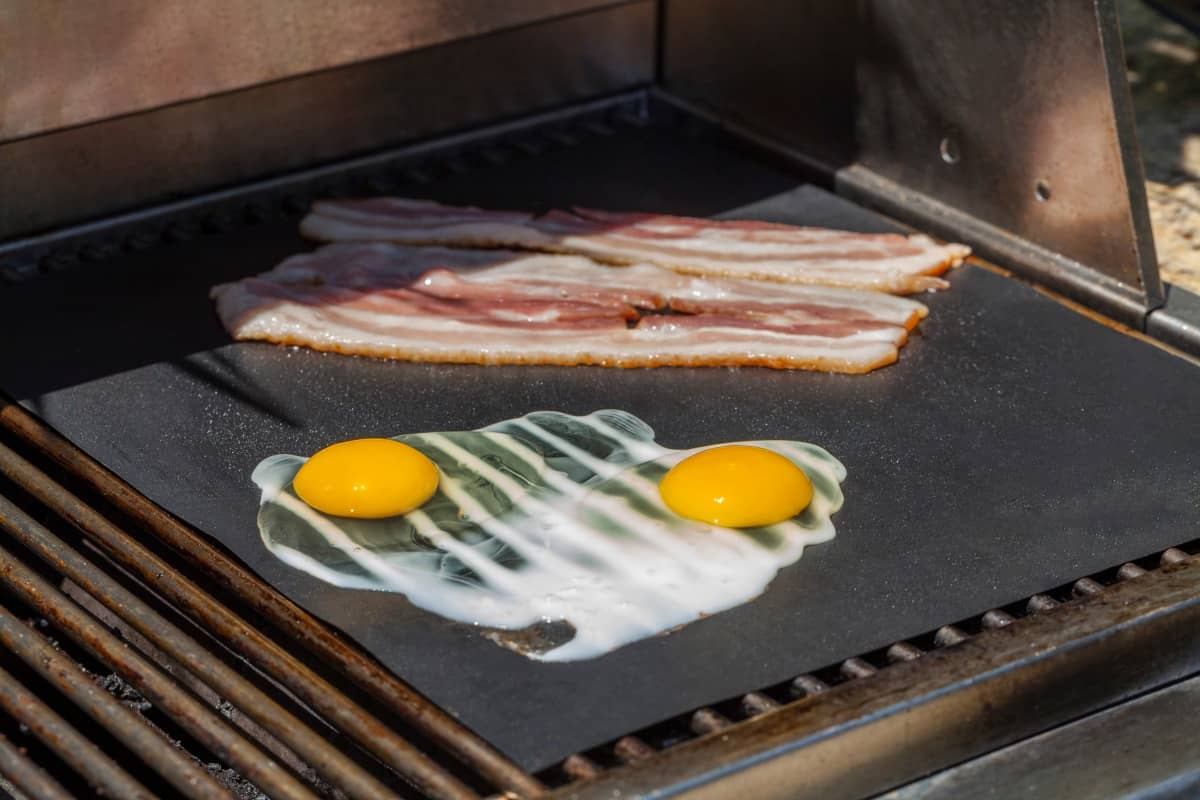
Yes, there are rules to using grill mats safely. As with most things, there’s the right way to use it, and there’s the wrong way. Here are some rules and guidelines as provided by the manufacturers.
How to Ensure Safe Grill Mat Use
Follow any and all directions provided with your new grill mats. This may include how far above the flames to use your mat to prevent exposure to very high temperatures.
You’ll also get washing and storage instructions. In a nutshell, you shouldn’t scrape or scrub your grill mats with sharp or abrasive objects or use strong cleaners. In most cases, mild dish soap and a washcloth or sponge are all you need. Some grill mats are even safe for the top rack of your dishwasher for contactless cleaning.
Never leave your mats on the grill where they may be exposed to extreme temperatures, either high or low. Always bring them indoors between uses and either store flat or rolled into a loose cylinder to prevent folds from turning into cracks.
When in use, do your best to control flare-ups. Blasts of flame and heat can, over time, cause your mats to deteriorate. Fortunately, that’s one of the things grill mats do best — keep grease from dripping onto the burners or charcoal. If you allow it to spill off the sides, though, flare-ups can still happen.
Are There Temperature Limits for Grill Mats?
All grill mats have a maximum safe operating temperature specified by the manufacturer. Typically, it’s 500 °F, though some boast they’re good up to 600 °F.
We’ve already established that the usual non-stick coating, PTFE, begins to break down at about 570 °F. When it does so, it can release toxic chemicals into the air and into your food.
But, if you stay below 500 °F, that’s plenty of leeway between you and the danger zone. And, if we’re honest (which we always are), why would you need to cook, say, eggs, pancakes, asparagus, or trout at pretty much full blast, anyway? You’re much more likely to cook in the 300 – 400 °F range.
Are There Foods You Should Not Cook?
In terms of safety, there’s nothing you can’t cook on a grill mat. They’re ideal for anything you’d normally cook in a frying pan, a skillet, or on a baking sheet in the oven.
Practically speaking, though, you wouldn’t want to use a grill mat to roast or smoke meat. That’s not so much a safety issue, though. The problem here is the mat would prevent the proper circulation of warm air through convection, slowing down your cook and stopping your meat from cooking all the way evenly through.
Here’s a tip: Try a wire mesh screen if you want to smoke smaller or delicate items. No, not the kind you use on a screen door — there are purpose-made, non-stick grilling meshes perfect for smoking nuts, veggies, and more.
Should You Use Only Certain Tools with Grill Mats?
Yes, you should only use certain tools with your grill mats, not only to ensure the non-stick coating stays on the mat, but also to extend its life. Basically, you’ll need to avoid using metal BBQ utensils.
Yes, I know silicone spatulas and tongs lack the cool factor of metal, or those excellent utensils made from old hockey sticks. That’s fine — you can save those for steaks done right on the grill.
The soft edges of silicone or wooden utensils won’t scratch or tear your mats, or scrape off the non-stick coating. This ensures you will not ingest any particles. Still, if you can use tongs instead of a spatula, do so. That will all but eliminate contact with the mat.
Conclusion
So, what’s the bottom line? Are grill mats safe, or not?
In my opinion, grill mats are like most modern conveniences: if you use them the way you’re supposed to, they’re perfectly safe. I love cooking on good-quality grill mats; they open up new possibilities and remove many of the frustrations that come with grilling certain foods. It’s a personal choice, of course, but I’m totally comfortable recommending them.
Hopefully, that settles the debate for you, or at least gives you the info you need to make an informed decision. It’s an important subject, so thanks for allowing us the chance to clear the air for you.
Cheers and happy grilling!


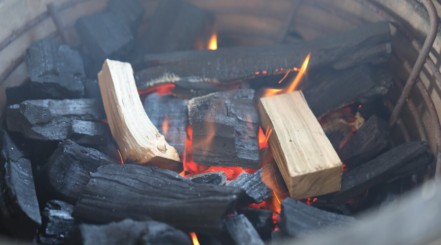
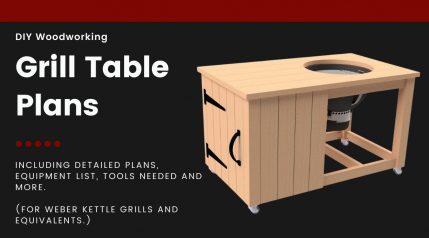
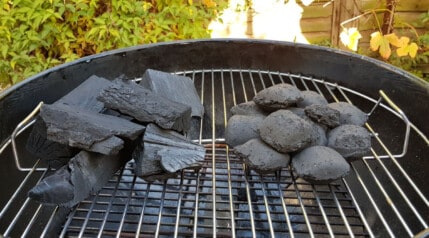
No they are not safe. Using them at even below the high heat level the toxic fumes killed my precious pet bird and I have severe breathing issues and chest pain. I am looking for an attorney as we speak. This should be in big bold letters on all products of this nature.
Can you use grill mats on a flat iron grill ? Or only standard rack grill?
Hi Teresa. I suppose you could, as long as you do not exceed their specified top temperature. However, can I ask why you would want to? I cannot see any benefit to doing so?
Hi I purchased the Tamashi/copper, baking& grilling Mats. Have just started using 1 everything that I cooked on the mat was delicious. I have told family and friends about the mats. Both my husband and I are very glad that I bought the mats.
Thanks for the interesting article. However, why would the instructions on the mat include,
“Dishwasher safe (top rack only)”?
Many dishwashers are hotter on the bottom rack, and the water pressure from the jets is far higher too. Some materials can get warped and distorted on the lower rack, but be fine in the upper rack. This is all model of dishwasher dependent though, as not all have the hotter lower rack.